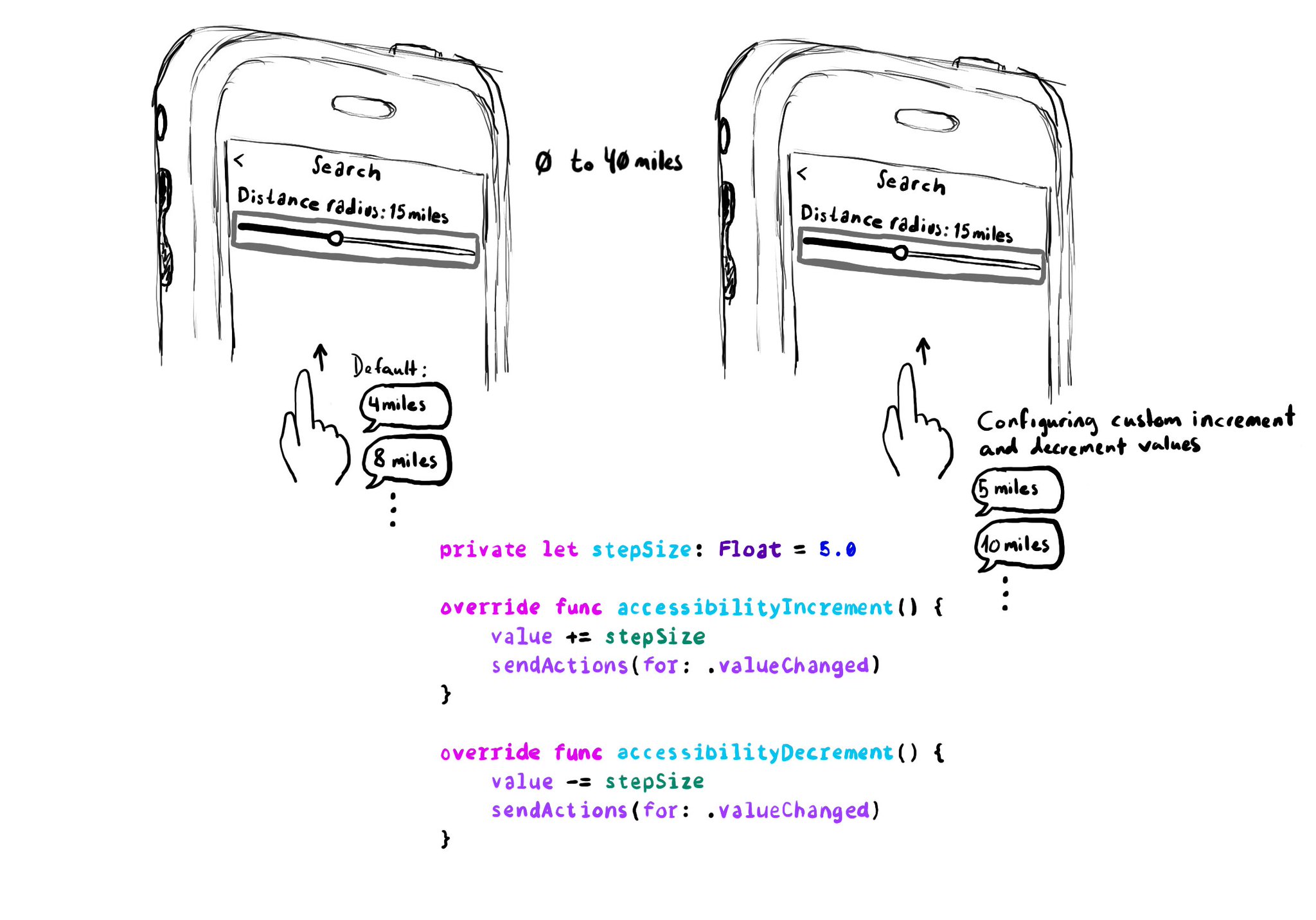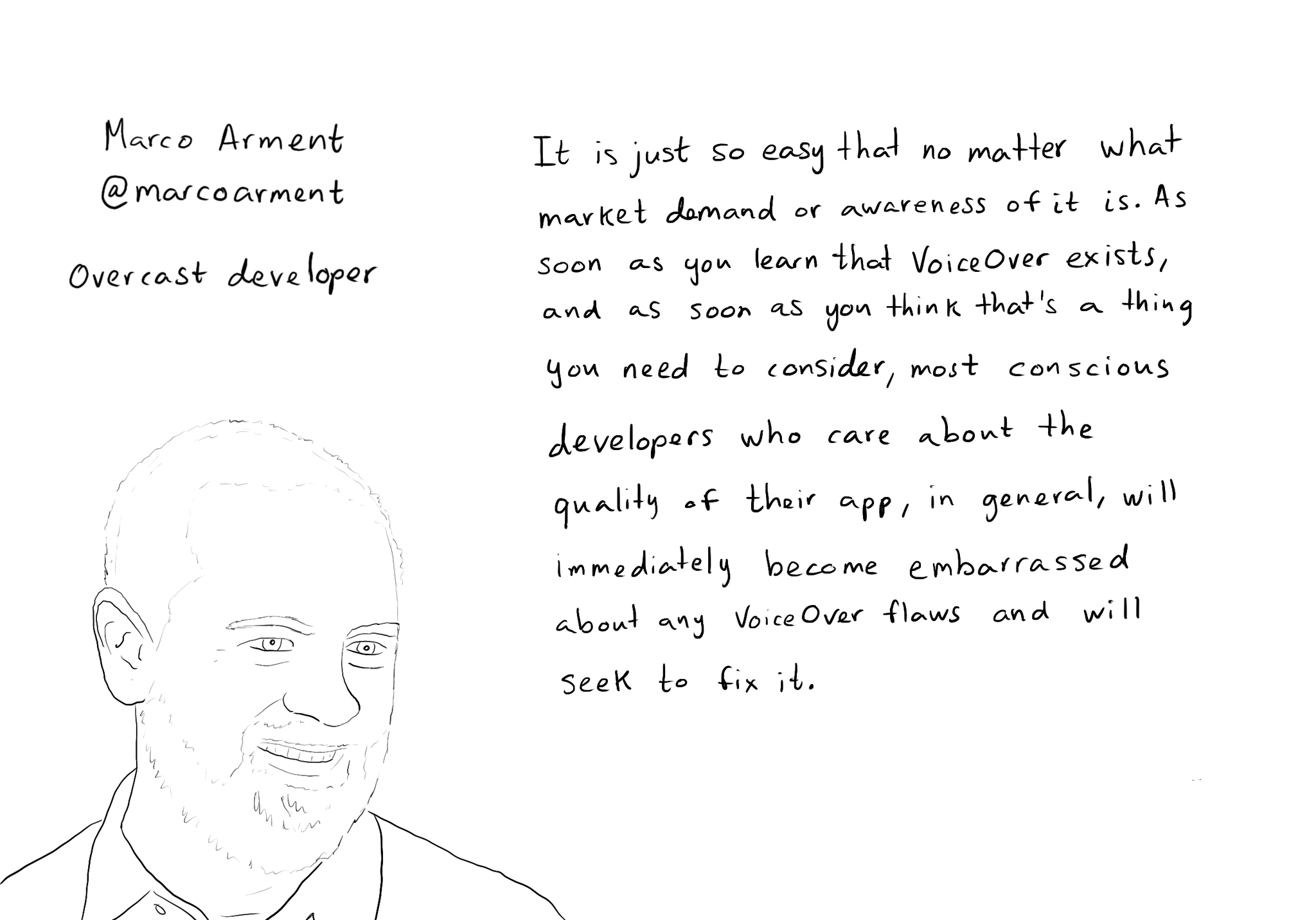Today and tomorrow I'll be learning at @a11yTO. There haven't been any talks about iOS specifically. But I thought I'd share in a thread some of today's learnings that I think still apply when developing accessible apps for iOS. #a11yTOconf
@a11yMel on continuous accessibility for quality at scale and reducing risks. Measure progress, but focus on people. When a measure becomes a target, it ceases to be a good measure. Accessibility is good for business but great for users.
@annaecook talked about annotating designs for accessibility. Loved that she thinks of it as a communication and learning tool that can help divide the gap between design and development. I'd give it a go and see if it works for your team.
Ann Mayer talked about writing accessible content. Technically compliant doesn't mean accessible. It is about being clear. The use of plain language principles, for example, is something that benefits everyone.
@DavidOfYork has shown how deceptive patterns harm people with anxiety and panic disorders. If you spot any of these in your app, call them out and raise awareness. We all suffer eventually from anxiety, accessibility is for everyone.
Michaela Peterhansl's practical guide for accessibility: Bring a11y to your daily work; you are not the only one responsible; ask questions; and find the people you can team-up with. "Don't forget: You can't do it alone", "Change is slow".
@DDame on how to get stakeholders to invest in accessibility through storytelling and data: I may have a disability, but my money doesn't. Do we want to exclude users? Offer them a bad experience? No. We will all be disabled one day.
Niki Ramesh gave useful tips to help you engage with a great a11y champions network. "Accessibility is not one person's job". Start informal/small, scale over time. Find representation across teams. Community, education, and recognition.
@ShellELittle talked about hiring accessible designers but touched on some points that apply to anyone working on accessibility. It can't be done by one person or you risk burnout.
Jennifer Payne on the importance of user research for building accessible products. Listen to users with disabilities. "Unless we consciously include, we unconsciously exclude".
@svinkle showed how important it is to shift accessibility to the left (early in the process) so you get more voices involved through ideation, prototyping, and design. And remember to prioritize progress over perfection.
You may also find interesting...
Second day of @a11yTO! And again, lots of talks with a ton of practical information. So here's a thread with some of my highlights. And very proud that @spotifydesign was one of the sponsors! #a11yTOconf

When implementing a UISlider, it is a good idea to consider how much the slider value should change when swiping up/down to adjust it. It might not always make sense to do it in 10% increments, which is the default behaviour. Could be because the value at those intervals doesn't make sense, or feel random, or because it wouldn't provide the user with a fine enough control being able to go through the whole slider in just 10 swipes. It user will still be able to adjust the slider to any value by double tapping and holding and then moving the finger left or right, bypassing VoiceOver gestures. VoiceOver announces the new value as it changes.

While you are at @shelly's "36 Seconds That Changed Everything", I would definitely also check out the Bonus Content. Including the full interview with @marcoarment. "Awareness is the biggest problem here." https://www.36seconds.org/behind-the-scenes/ "Cause iOS 7 was so inaccessible in so many ways (...) it started getting under developers’ radars this section of settings, called accessibility, that changes the way my app looks or works and I need to make sure that it doesn’t break under those settings.” "There’s so much variation out there. We no longer have just one size phone, we no longer have just one font size. It is easier for us as developers not to fall into bad assumptions of how I see it is how everyone is going to see it.” "The good thing about VoiceOver is that the accessibility framework is pretty well built-in the standard controls. For a given app you can fix any VoiceOver problems it has in one day or less. Even if it is a complex app. Even if it has a lot of custom controls." "What developers now do, if they care, is they treat that (accessibility issues) as if it was any other design flaw. If any other screen in your app broke visually or functionally you’d consider that a bug and you would try to fix it in the next update.” "I think the more that we can do as a developer community to talk about these features even existing, and these problems existing, and to tell people how easy it is to fix. That is the best any of us can do to help. Awareness is the biggest problem here."